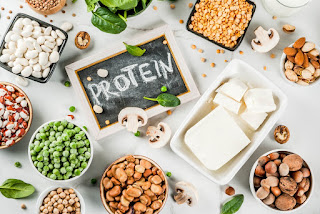It’s that time of year again when the kids are headed back to school, you're off to work and it’s easy to feel overwhelmed with the thought of so many lunches to prepare. We’ve got your back this new school year - creating a nutritionally balanced lunchbox doesn’t have to be so stressful. Take a step in the right direction by making your kids - and yourself - a wholesome sandwich!
Did you know bread contains vital nutrients such as fibre, B-group vitamins, folate, thiamine, zinc, vitamin E and antioxidants? So it’s the perfect vehicle for creating a nutritious, portable lunch.
If you’re lacking inspiration when it comes to packing school lunches, simply follow our 4 easy steps to creating the ultimate portable lunch…
1. Choose your base - a well-constructed sandwich relies on a substantial base! Whatever you choose to build your sandwich on - sliced bread, wraps or rolls - we recommend choosing whole grain, wholemeal or high fibre varieties where possible. Whole grain and high fibre foods can reduce our risk of developing Type 2 diabetes, heart disease and some cancers.
If you have a picky eater on your hands try using one slice white and one slice wholemeal bread or use a high fibre white bread!
2. Add flavour - use your favourite spread like vegemite, hummus or avocado to add a pop of flavour, colour and nutrients. Mix things up and try this bright beetroot hummus.
3. Add your veggies - use a handful of salad or any other raw or cooked vegetables you have at home. Don’t look past last night’s leftover roast pumpkin or zucchini!
4. Finally, choose your protein power - quick and easy sources of protein like cheese, tuna, boiled egg, crushed beans or leftover poached chicken are great for sandwiches.
Getting the kids involved...
Now that you’re ready to get creative, why not get the kids to help? A great way to get younger kids involved and make lunchboxes fun is by cutting sandwiches into shapes using cookie cutters. Or get them to roll wraps in foil to make it easier for them to eat.
Encourage your kids to get involved in lunchbox choices too - asking them to choose their fruit and veggies will help to reduce uneaten food at the end of the day.
Top tips for avoiding soggy sandwiches
· Very lightly toast bread, just 1-2 minutes
· Make sure lettuce leaves, rocket and salads are nice and dry before assembling - use a paper towel to remove most of the moisture
· Put condiments like mayo in the middle of your sandwich, between meat or cheese
· Use lettuce leaves as a barrier - layer first so they are directly in contact with the bread
Still lacking inspiration?
Don’t worry, we’ve prepared a lunchbox planner for the week ahead, plus a bunch of sandwich, wrap and roll recipes that are sure to inspire your lunches. You can find all these and more on our website. Check out our Mexican Bean Wrap which takes just 5 minutes to prepare, plus it’s a winner with the whole family!
































